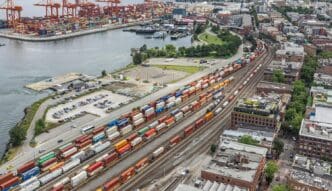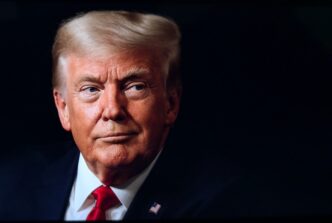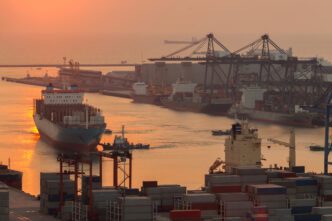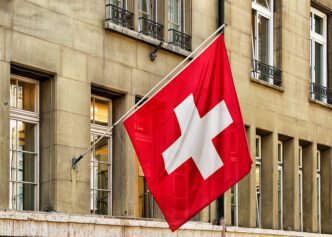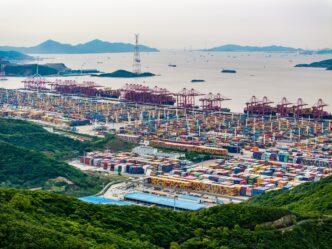Executive Summary
The Story So Far
Why This Matters
Who Thinks What?
Prime Minister Narendra Modi has urged Indian citizens to prioritize domestically produced goods, advocating a “Made in India” mantra as the nation’s industries face significant challenges from newly imposed U.S. tariffs. The call comes after President Donald Trump escalated duties on Indian goods to a total of 50 percent, citing India’s continued purchase of Russian oil and broader reciprocal trade measures. These tariffs, which took effect this week, have raised concerns about the future of the $212 billion bilateral trade relationship between the two countries.
Modi’s Call for Domestic Consumption
In a recent speech, Prime Minister Modi encouraged Indians to choose “made in India” products for all purchases, from decorative items to gifts. This appeal has been reiterated in several addresses, with Modi also urging businesses to prominently display “made in India” signs outside their establishments. The initiative aims to bolster domestic industries amidst increasing external trade pressures.
Escalation of U.S. Tariffs
The latest tariff hike by President Trump brings the total duty on Indian goods to 50 percent. This increase includes a 25 percent duty implemented in August as part of reinstated reciprocal tariffs, followed by an additional 25 percent signed on August 6 in response to India’s direct or indirect import of Russian Federation oil. These duties are among the highest imposed on any of America’s trading partners.
Initially, India was considered a strong contender for a trade deal with the U.S., with optimism expressed by India’s External Affairs Minister Subrahmanyam Jaishankar and hints from President Trump about an imminent agreement. However, following several rounds of unsuccessful negotiations, the situation deteriorated, leading to the current high tariff rates.
Impact on Indian Economy and Industry
New Delhi has labeled the new tariffs as “unfair, unjustified and unreasonable,” and their implementation has sent Indian industries into disarray, given that the U.S. is the country’s largest export market. Key Indian exports affected include telecommunications instruments, drugs and pharmaceuticals, petroleum products, textiles, and gems and jewelry.
A brokerage firm characterized the new tariffs as effectively a “trade embargo” on Indian goods, predicting a “sudden stop in affected export products.” One textile factory owner reported putting expansion plans on hold, fearing the duties could threaten his entire business operation.
Attempts to Mitigate Tariff Impact
In an effort to circumvent the tariffs, Indian diamond exporters proposed routing goods through Dubai before shipping them to the U.S. However, the U.S. has clarified that duties are based on the “country of origin,” thereby precluding such transshipment strategies. International diamond industry analyst Ya’akov Almor explained that this method is not viable under the defined tariff rules.
Official Statements and Perspectives
Prime Minister Narendra Modi stated, “My government will never allow any harm to come to small entrepreneurs, farmers and animal keepers. No matter how much pressure we face, we will continue to strengthen our ability to withstand it.”
President Donald Trump, in an August 4 post on Truth Social, wrote, “India is not only buying massive amounts of Russian Oil, they are then, for much of the Oil purchased, selling it on the Open Market for big profits. They don’t care how many people in Ukraine are being killed by the Russian War Machine. Because of this, I will be substantially raising the Tariff paid by India to the USA.”
Indian Foreign Minister Subrahmanyam Jaishankar countered this argument at an Economic Times forum, stating, “If the argument is oil, then there are [other] big buyers. If argument is who is trading more [with Russia], than there are bigger traders.”
Hudson Institute fellow Bill Drexel and former U.S. Ambassador to the United Nations Nikki Haley emphasized the critical nature of the U.S.-India relationship for achieving U.S. foreign policy goals, particularly in outcompeting China. They highlighted India’s potential to help the United States move critical supply chains away from China, especially for products like textiles, inexpensive phones, and solar panels.
Outlook on Future Negotiations
A meeting between negotiators planned for this week has been indefinitely postponed, according to Reuters. However, an anonymous Indian government official indicated that recent discussions had provided “hopes of a breakthrough,” suggesting ongoing efforts to resolve the trade dispute despite the current impasse.
The escalating trade tensions between India and the United States underscore a complex period in their bilateral economic relations. With India pushing for domestic consumption and facing significant tariff pressures, the path forward for a resolution remains uncertain, impacting various sectors of both economies.

